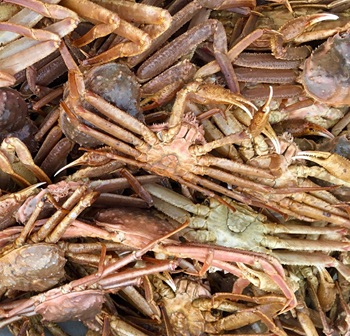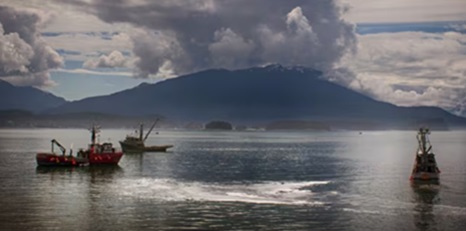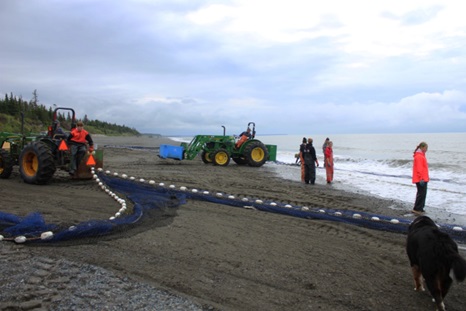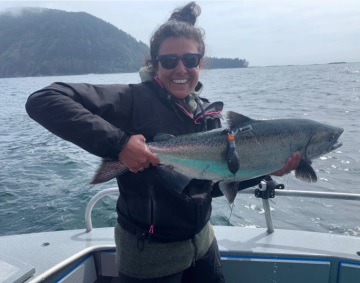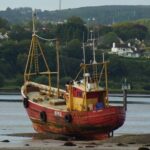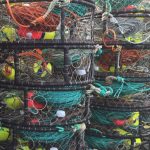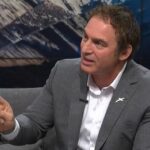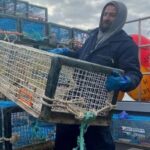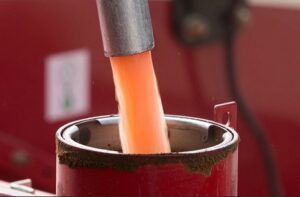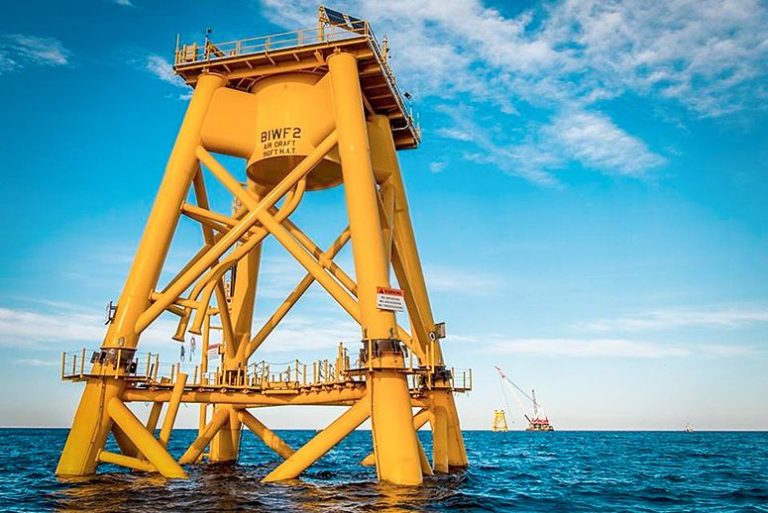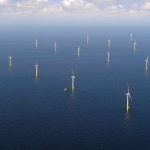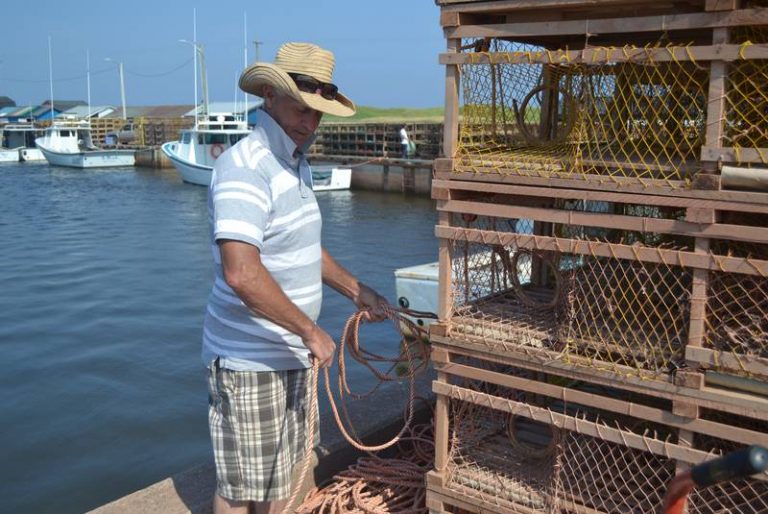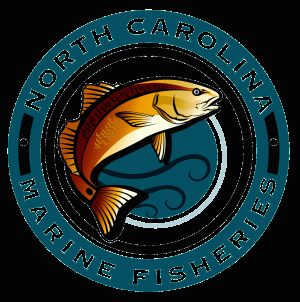Tag Archives: Alaska Department of Fish and Game
Big fight looms at Board of Fish meeting over Prince William Sound trawl bycatch
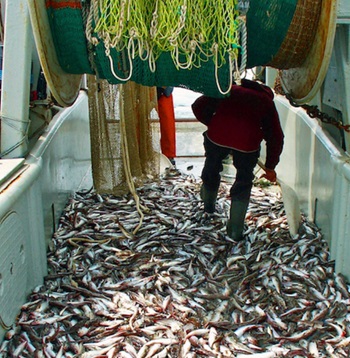 For years, conservationists, tribes and fishermen have feuded over bycatch of salmon in the huge pollock harvest in the remote Bering Sea off Alaska. Now, a new bycatch fight has erupted over a much smaller pollock fishery not far from urban Alaska, in the waters of Prince William Sound, east of Anchorage. This week, the state Board of Fisheries is considering four proposals by a local tribal government and an Alaska sportsmen’s group that could place sharp restrictions on, or even close down, Prince Williams Sound’s annual pollock trawl harvest. Supporters of the proposals cite state data that show the roughly 15 participating boats, most of which come from Kodiak Island, unintentionally scoop up some 900 king salmon and 900 rockfish each year in their wide-mouth trawl nets. And they say that subsistence harvests of those fish need protection. more, >>CLICK TO READ<< 12:07
For years, conservationists, tribes and fishermen have feuded over bycatch of salmon in the huge pollock harvest in the remote Bering Sea off Alaska. Now, a new bycatch fight has erupted over a much smaller pollock fishery not far from urban Alaska, in the waters of Prince William Sound, east of Anchorage. This week, the state Board of Fisheries is considering four proposals by a local tribal government and an Alaska sportsmen’s group that could place sharp restrictions on, or even close down, Prince Williams Sound’s annual pollock trawl harvest. Supporters of the proposals cite state data that show the roughly 15 participating boats, most of which come from Kodiak Island, unintentionally scoop up some 900 king salmon and 900 rockfish each year in their wide-mouth trawl nets. And they say that subsistence harvests of those fish need protection. more, >>CLICK TO READ<< 12:07
Alaska’s total commercial salmon harvest this year was ultra-low in both quantity and value
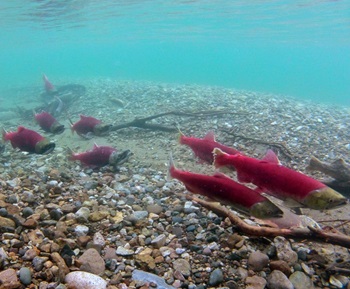 The number of Alaska salmon harvested by commercial fishers was the third smallest since all-species records began in 1985, and the value to harvesters, when adjusted for inflation, was the lowest reported since 1975, state officials said. Additionally, the 450 million pounds of salmon that the total harvest contained was the lowest on record, officials said. The totals come from a preliminary recap of this year’s salmon season issued on Nov. 18 by the Alaska Department of Fish and Game. Only 101.2 million salmon were harvested this year, less than half the 232.2 million harvested last year, the department reported. The money paid to fishers for their catches, known as ex-vessel value, totaled $304 million, down from $398 million last year, the department said, In the Bristol Bay region, site of the world’s biggest sockeye runs, this year’s return was well above projections and 7% higher than the 20-year average, though the amount commercially harvested was a bit below the average. more, >>CLICK TO READ<< 16:09
The number of Alaska salmon harvested by commercial fishers was the third smallest since all-species records began in 1985, and the value to harvesters, when adjusted for inflation, was the lowest reported since 1975, state officials said. Additionally, the 450 million pounds of salmon that the total harvest contained was the lowest on record, officials said. The totals come from a preliminary recap of this year’s salmon season issued on Nov. 18 by the Alaska Department of Fish and Game. Only 101.2 million salmon were harvested this year, less than half the 232.2 million harvested last year, the department reported. The money paid to fishers for their catches, known as ex-vessel value, totaled $304 million, down from $398 million last year, the department said, In the Bristol Bay region, site of the world’s biggest sockeye runs, this year’s return was well above projections and 7% higher than the 20-year average, though the amount commercially harvested was a bit below the average. more, >>CLICK TO READ<< 16:09
Red king crab harvest looking ‘very good’ so far for Bristol Bay fleet
 The Bering Sea’s biggest and most lucrative crab fisheries opened last week, and so far, fishing is looking good. “Fishing has been very good for the [Bristol Bay red king crab] fleet this season and the crab delivered so far has been of high quality — new shell, large size, good meat-fill,” said Alaska Department of Fish and Game Area Management Biologist Ethan Nichols. As of Wednesday afternoon, about 29% of the total allowable catch (TAC), for the Bristol Bay red king crab fishery had been harvested, according to Nichols. He said so far, reports from captains and from observer catch reports show signs of productive fishing. Nichols said 14 vessels had landed about 680,000 pounds of king crab. The average weight is 6.84 pounds, and the catch rate is 35 legal males per pot. Both of those numbers are up slightly from last year. more, >>CLICK TO READ<< 09:14
The Bering Sea’s biggest and most lucrative crab fisheries opened last week, and so far, fishing is looking good. “Fishing has been very good for the [Bristol Bay red king crab] fleet this season and the crab delivered so far has been of high quality — new shell, large size, good meat-fill,” said Alaska Department of Fish and Game Area Management Biologist Ethan Nichols. As of Wednesday afternoon, about 29% of the total allowable catch (TAC), for the Bristol Bay red king crab fishery had been harvested, according to Nichols. He said so far, reports from captains and from observer catch reports show signs of productive fishing. Nichols said 14 vessels had landed about 680,000 pounds of king crab. The average weight is 6.84 pounds, and the catch rate is 35 legal males per pot. Both of those numbers are up slightly from last year. more, >>CLICK TO READ<< 09:14
Bering Sea snow crab fishing to resume, but at an ultra-low level to encourage repopulation
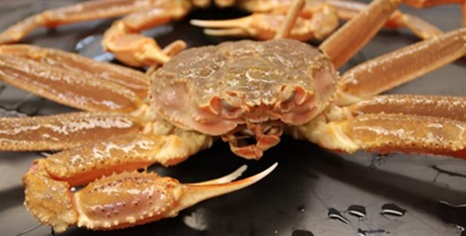 After a two-year hiatus forced by low stocks, the Bering Sea snow crab harvest is back on. The decision to reopen the harvest, announced on Oct. 4 by the Alaska Department of Fish and Game, is based on signs of recovery in the crab populations. The official harvest opening was Tuesday. Signs of recovery are modest, and so is the allowable catch. The harvest is limited to 4.72 million pounds, a level that is a far cry from the 45-million-pound quota used in the 2020-21 season and similarly large quotas in earlier years. This season’s total allowable catch is the smallest in the history of the fishery, said Mark Stichert, the Alaska Department of Fish and Game’s Kodiak-based management coordinator for groundfish and shellfish harvests. more, >>CLICK TO READ<< 19:40
After a two-year hiatus forced by low stocks, the Bering Sea snow crab harvest is back on. The decision to reopen the harvest, announced on Oct. 4 by the Alaska Department of Fish and Game, is based on signs of recovery in the crab populations. The official harvest opening was Tuesday. Signs of recovery are modest, and so is the allowable catch. The harvest is limited to 4.72 million pounds, a level that is a far cry from the 45-million-pound quota used in the 2020-21 season and similarly large quotas in earlier years. This season’s total allowable catch is the smallest in the history of the fishery, said Mark Stichert, the Alaska Department of Fish and Game’s Kodiak-based management coordinator for groundfish and shellfish harvests. more, >>CLICK TO READ<< 19:40

In surprising move, Bering Sea snow crab fishery to reopen after 2 year closure
The Alaska Department of Fish and Game announced Friday afternoon that Bering Sea fishermen will be allowed to harvest a total of about 4.7 million pounds of opilio, also known as snow crab, for the first time in two years. According to Fish and Game, estimates of total mature male biomass are above the threshold required to open the fishery. The announcement comes as a surprise to many fishermen, after roughly 10 billion snow crabs disappeared from the Bering Sea over a span of four years, and Fish and Game closed the fishery in 2022. Recently, scientists have learned that the disappearance was likely due to ecological shifts, and there’s been little hope within the industry that stocks would recover anytime soon. more, >>CLICK TO READ<< 10:49
Cook Inlet fisheries to get $9.4M in disaster relief for 2018, 2020
 Two Cook Inlet salmon fisheries will receive more than $9.4 million in federal disaster relief that was held up, in part, by technical difficulties. They’re among ten Alaska fisheries getting money, the state’s Congressional delegation announced Friday. In all, ten fisheries across the state will receive $277 million for disasters dating back to 2018. They include 2020’s Upper Cook Inlet salmon fishery and 2018’s Upper Cook Inlet east side setnet fishery. Other fisheries that will receive money through the distribution include Bering Sea crab, Kuskokwim River and Norton Sound salmon and Gulf of Alaska pacific cod. more, >>CLICK TO READ<< 13:39
Two Cook Inlet salmon fisheries will receive more than $9.4 million in federal disaster relief that was held up, in part, by technical difficulties. They’re among ten Alaska fisheries getting money, the state’s Congressional delegation announced Friday. In all, ten fisheries across the state will receive $277 million for disasters dating back to 2018. They include 2020’s Upper Cook Inlet salmon fishery and 2018’s Upper Cook Inlet east side setnet fishery. Other fisheries that will receive money through the distribution include Bering Sea crab, Kuskokwim River and Norton Sound salmon and Gulf of Alaska pacific cod. more, >>CLICK TO READ<< 13:39
Overall impact of disastrous pink salmon fishery still being calculated
 Fallout from what’s being described by commercial fishermen as a pink salmon disaster in Prince William Sound is still being calculated, but troubling times began earlier this year when high insurance costs kept some from ever going out in their boats. Low runs of humpies, mounting fuel costs and some processors opening up late all appear to be spelling big economic challenges for the Prince William Sound economy. “It’s going to be a big hit for the town,” said Cordova City Council Member Kristen Carpenter, who is anticipating a significant loss of raw fish tax dollars to the city this year. “It was an absolute disaster,” said veteran salmon harvester John Renner, chair of the Alaska Department of Fish and Game’s Copper River/Prince William Sound Advisory Committee. One young man lost his boat, said Renner. “Anyone who has payments to make is in trouble unless they have dual permits and are making money off of gillnetting or longlining,” he said. “Fuel is $5 a gallon and insurance costs are up 25%.” more, >>CLICK TO READ<< 13:55
Fallout from what’s being described by commercial fishermen as a pink salmon disaster in Prince William Sound is still being calculated, but troubling times began earlier this year when high insurance costs kept some from ever going out in their boats. Low runs of humpies, mounting fuel costs and some processors opening up late all appear to be spelling big economic challenges for the Prince William Sound economy. “It’s going to be a big hit for the town,” said Cordova City Council Member Kristen Carpenter, who is anticipating a significant loss of raw fish tax dollars to the city this year. “It was an absolute disaster,” said veteran salmon harvester John Renner, chair of the Alaska Department of Fish and Game’s Copper River/Prince William Sound Advisory Committee. One young man lost his boat, said Renner. “Anyone who has payments to make is in trouble unless they have dual permits and are making money off of gillnetting or longlining,” he said. “Fuel is $5 a gallon and insurance costs are up 25%.” more, >>CLICK TO READ<< 13:55
Alaska Trollers Association takes a swing at Fish and Game and Alaska sport fishery over shortened season
 Commercial trolling for Southeast king salmon closed for the season in July and will not reopen this month. That marks the second summer in a row their season has ended before they could catch all of their yearly king allocation under an international agreement. Now, the trade group representing them — the Alaska Trollers Association — is outraged. Southeast trollers have around 15,000 kings left in their annual allocation. That’s the number of kings trollers get to catch under an agreement between the United States and Canada known as the Pacific Salmon Treaty. The trollers caught most of their allocation — 83%, or 82,000 fish — during the first and longest opener in July. Typically, the rest of the allocation would be caught in a mid-August opening. But that second opening won’t be happening. more, >>CLICK TO READ<< 16:02
Commercial trolling for Southeast king salmon closed for the season in July and will not reopen this month. That marks the second summer in a row their season has ended before they could catch all of their yearly king allocation under an international agreement. Now, the trade group representing them — the Alaska Trollers Association — is outraged. Southeast trollers have around 15,000 kings left in their annual allocation. That’s the number of kings trollers get to catch under an agreement between the United States and Canada known as the Pacific Salmon Treaty. The trollers caught most of their allocation — 83%, or 82,000 fish — during the first and longest opener in July. Typically, the rest of the allocation would be caught in a mid-August opening. But that second opening won’t be happening. more, >>CLICK TO READ<< 16:02
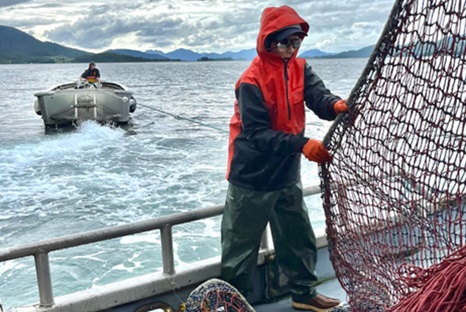
‘Huge disaster’: Historically weak pink salmon runs strain Alaska’s seine fishermen
Expectations were low this year for the pink salmon runs that power Prince William Sound’s commercial fishing industry. But no one expected them to be as bad as they’ve been. With just a few weeks left in the season, the sound’s seine fleet has harvested just one-fourth the number of pinks that it would have caught by now in a typical year. The small runs have forced 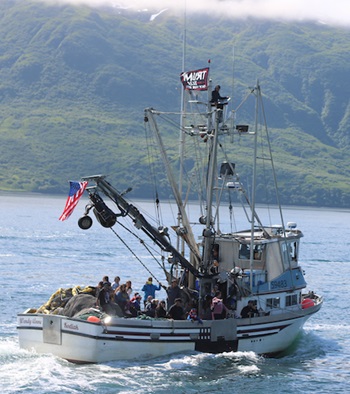 managers to close fishing for longer periods than usual. And even during openers, fishermen are reporting abysmal harvests. Some have quit early. Others are thinking about new jobs.” It is incredibly slow,” said Megan Corazza, a Homer-based seine fisherman who has fished in the sound for more than two decades. “It is the worst year I have ever seen with my own operation.” It’s a big blow to an industry already reeling from a global market crisis that sent dock prices plummeting last year. Photos, more, >>CLICK TO READ<< 09:31
managers to close fishing for longer periods than usual. And even during openers, fishermen are reporting abysmal harvests. Some have quit early. Others are thinking about new jobs.” It is incredibly slow,” said Megan Corazza, a Homer-based seine fisherman who has fished in the sound for more than two decades. “It is the worst year I have ever seen with my own operation.” It’s a big blow to an industry already reeling from a global market crisis that sent dock prices plummeting last year. Photos, more, >>CLICK TO READ<< 09:31
Illegal fishing shuts down Egegik district
 In Bristol Bay’s Egegik district, it’s not uncommon to see some boats illegally fishing over the line. But this year seemed particularly bad, according to the Alaska Department of Fish and Game. “We were receiving daily phone calls between Fish and Game and wildlife troopers, you know, multiple boats upwards of fifty at a time fishing outside of the district,” Tiernan said. That’s state biologist Aaron Tiernan. He says that during the peak of the season, extra Alaska State Troopers flood Bristol Bay from around the state. It’s a big effort. But as fishing winds down, the Alaska Department of Fish and Gamey start leaving to patrol other areas. “More and more reports come in. Because there’s less, there’s less enforcement going on overall. And we need to try to protect stocks that are going north and south or even into Egegik,” Tiernan said. So, in response, he decided to shut the fishery down. more, >>CLICK TO READ<< 14:39
In Bristol Bay’s Egegik district, it’s not uncommon to see some boats illegally fishing over the line. But this year seemed particularly bad, according to the Alaska Department of Fish and Game. “We were receiving daily phone calls between Fish and Game and wildlife troopers, you know, multiple boats upwards of fifty at a time fishing outside of the district,” Tiernan said. That’s state biologist Aaron Tiernan. He says that during the peak of the season, extra Alaska State Troopers flood Bristol Bay from around the state. It’s a big effort. But as fishing winds down, the Alaska Department of Fish and Gamey start leaving to patrol other areas. “More and more reports come in. Because there’s less, there’s less enforcement going on overall. And we need to try to protect stocks that are going north and south or even into Egegik,” Tiernan said. So, in response, he decided to shut the fishery down. more, >>CLICK TO READ<< 14:39
Norton Sound Crab Season Ends Early Amidst Concerns Over Non-Regional Fishing Vessels
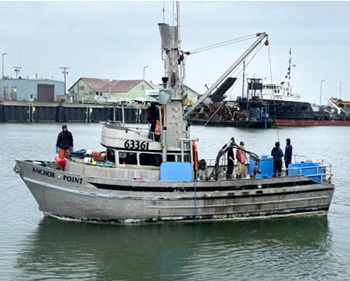 After only 28 days, the Norton Sound summer commercial Red King Crab season has come to a close. According to the Alaska Department of Fish and Game, this year’s season was just over half as long as the average run of 54 days from 1994 to 2023. For the 2024 season, Norton Sound was the only fishery in the country open for commercial Red King Crab harvesting. This is an attractive opportunity for fishing crews as the statewide commercial quota for the reputed “deadliest catch” is solely concentrated in the waters of Norton Sound. A boat at the center of recent public scrutiny is the F/V Resilient, owned and operated by Raymond May of Kodiak. more, >>CLICK TO READ<< 10:24
After only 28 days, the Norton Sound summer commercial Red King Crab season has come to a close. According to the Alaska Department of Fish and Game, this year’s season was just over half as long as the average run of 54 days from 1994 to 2023. For the 2024 season, Norton Sound was the only fishery in the country open for commercial Red King Crab harvesting. This is an attractive opportunity for fishing crews as the statewide commercial quota for the reputed “deadliest catch” is solely concentrated in the waters of Norton Sound. A boat at the center of recent public scrutiny is the F/V Resilient, owned and operated by Raymond May of Kodiak. more, >>CLICK TO READ<< 10:24
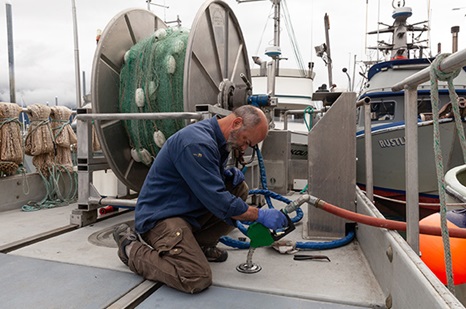
Salmon disaster relief applications for permit-holders due August 24
Federal disaster aid is on the way for some commercial fishing permit-holders in Haines and throughout the state, though many may be too wrapped up in the current season to apply for it right away. Applications for crew and subsistence users are currently available online. Unique applications for permit-holders and processors from the Pacific States Marine Fisheries Commission were mailed out on June 26 and are due August 24. Once completed the application can be mailed back to the commission or uploaded online. There’s also aid for vessel crew, and those applications are not due until September 28, but they may be harder to find. They’ll also need an affidavit from the permit holder or vessel owner they worked with to apply. more, >>CLICK TO READ<< 07:10
Bristol Bay Fisheries Report: July 3, 2024
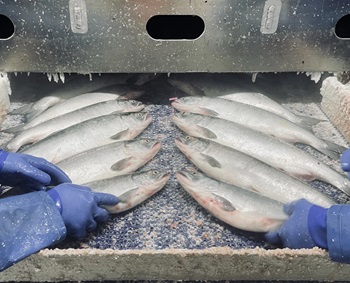 The baywide catch yesterday was 860,000, with over half of those fish coming from the Nushagak district. Egegik daily catch numbers more than doubled, with big average drift deliveries. Test fishery crews out at Port Moller report another day of increased catch indices, and say with those numbers, a larger and later run is more likely. An electrical fire damaged one of three spiral freezers aboard the Hannah on Sunday, June 30 2024. That’s Northline Seafood’s new floating processor, which is anchored in Bristol Bay’s Nushagak district this salmon season. The vessel is currently operating at a reduced capacity, although other processors are taking on some of Northline’s fleet. more, >>CLICK TO READ<< 10:14
The baywide catch yesterday was 860,000, with over half of those fish coming from the Nushagak district. Egegik daily catch numbers more than doubled, with big average drift deliveries. Test fishery crews out at Port Moller report another day of increased catch indices, and say with those numbers, a larger and later run is more likely. An electrical fire damaged one of three spiral freezers aboard the Hannah on Sunday, June 30 2024. That’s Northline Seafood’s new floating processor, which is anchored in Bristol Bay’s Nushagak district this salmon season. The vessel is currently operating at a reduced capacity, although other processors are taking on some of Northline’s fleet. more, >>CLICK TO READ<< 10:14
Copper River continues lead in PWS commercial salmon harvests
 With ice essentially gone from river systems, the sockeyes continued to weigh in heavier than through the same period a year ago, said fisheries biologist Jeremy Botz, in the Cordova office of the Alaska Department of Fish and Game. The Bering River and Coghill districts were also open for 36-hour commercial runs on Monday, and the Eshamy district for a 24-hour period. Montague District opened for purse seiners for 24 hours, and the Southwestern district for 48 hours, also for seiners. Even with other wild Alaska salmon fisheries opening for the season, Copper River sockeyes were holding their own in Anchorage restaurants, with entrees of Copper River reds offered at $49 at Simon and Seafort’s and $32 for the entree at Orso. more, >>CLICK TO READ<< 06:50
With ice essentially gone from river systems, the sockeyes continued to weigh in heavier than through the same period a year ago, said fisheries biologist Jeremy Botz, in the Cordova office of the Alaska Department of Fish and Game. The Bering River and Coghill districts were also open for 36-hour commercial runs on Monday, and the Eshamy district for a 24-hour period. Montague District opened for purse seiners for 24 hours, and the Southwestern district for 48 hours, also for seiners. Even with other wild Alaska salmon fisheries opening for the season, Copper River sockeyes were holding their own in Anchorage restaurants, with entrees of Copper River reds offered at $49 at Simon and Seafort’s and $32 for the entree at Orso. more, >>CLICK TO READ<< 06:50
Area commercial harvest reaches over 438,000 salmon
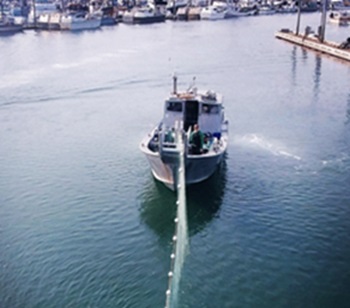 When state fisheries biologists shut down the Copper River commercial salmon for two 12-hour openers on June 3 and June 8 retail markets in Anchorage ran out of the popular Copper River fish, making way for the fresh catch of Cook Inlet sockeyes which were selling at $14.99 a pound. The decision to close those fisheries was that river waters were low and very cold, and the migration into rivers was running late, said Alaska Department of Fish and Game fisheries biologist Jeremy Botz, in Cordova. But then ADF&G opted to allow a 12-hour opener on Saturday, June 8, which brought in 338 deliveries with an estimated 74,296 sockeyes, 2,724 chum, 493 Chinook and 434 pink salmon. more, >>CLICK TO READ<< 07:40
When state fisheries biologists shut down the Copper River commercial salmon for two 12-hour openers on June 3 and June 8 retail markets in Anchorage ran out of the popular Copper River fish, making way for the fresh catch of Cook Inlet sockeyes which were selling at $14.99 a pound. The decision to close those fisheries was that river waters were low and very cold, and the migration into rivers was running late, said Alaska Department of Fish and Game fisheries biologist Jeremy Botz, in Cordova. But then ADF&G opted to allow a 12-hour opener on Saturday, June 8, which brought in 338 deliveries with an estimated 74,296 sockeyes, 2,724 chum, 493 Chinook and 434 pink salmon. more, >>CLICK TO READ<< 07:40
Copper River salmon aficionados hail arrival of first fish
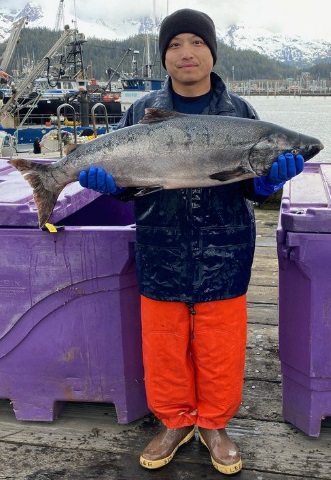 In Cordova the first 12-hour opener of the Copper River commercial salmon fishery, with 376 deliveries, yielded a catch of nearly 43,000 sockeye salmon, 1,108 Chinook, 247 chum, and two cohos to processors. The second opener, with 400 deliveries, brought in another 51,994 sockeye, 1,284 Chinook, 2,182 chum, and 62 coho salmon. As of May 21, the Alaska Department of Fish and Game’s Cordova office said that the overall catch stood at 93,851 sockeye, 2,392 Chinook, 2,433 chum, and 64 coho salmon. Processors were offering $7 a pound for sockeyes and $16 a pound for kings. Meanwhile, a chance to sample the first Copper River sockeye salmon drew some 400 seafood fans to Anchorage ski slopes on Saturday, May 18, where they dined on appetizers prepared by top chefs and bid in an auction that raised $8,350 for the Make A Wish Foundation. more, >>CLICK TO READ<< 14:17
In Cordova the first 12-hour opener of the Copper River commercial salmon fishery, with 376 deliveries, yielded a catch of nearly 43,000 sockeye salmon, 1,108 Chinook, 247 chum, and two cohos to processors. The second opener, with 400 deliveries, brought in another 51,994 sockeye, 1,284 Chinook, 2,182 chum, and 62 coho salmon. As of May 21, the Alaska Department of Fish and Game’s Cordova office said that the overall catch stood at 93,851 sockeye, 2,392 Chinook, 2,433 chum, and 64 coho salmon. Processors were offering $7 a pound for sockeyes and $16 a pound for kings. Meanwhile, a chance to sample the first Copper River sockeye salmon drew some 400 seafood fans to Anchorage ski slopes on Saturday, May 18, where they dined on appetizers prepared by top chefs and bid in an auction that raised $8,350 for the Make A Wish Foundation. more, >>CLICK TO READ<< 14:17
A Historic Agreement – Canada and U.S. suspend all fishing for Canadian-origin Yukon River chinook salmon
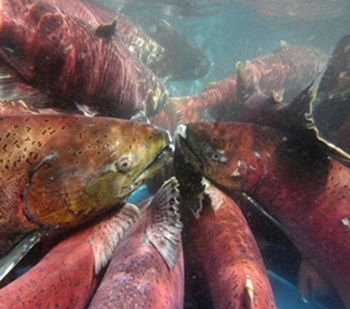 Canada and the United States are suspending all fishing for Canadian-origin Yukon River chinook salmon for seven years in an attempt to protect the dwindling species. The agreement covers the length of one life cycle of the fish and recognizes that the “persistent decline of chinook salmon” has led to an inability to meet conservation objectives in both countries. more, >>CLICK TO READ<< – Canada and Alaska sign a historic agreement to protect Yukon River Chinook salmon, To ensure the protection and recovery of Yukon River Chinook salmon, Fisheries and Oceans Canada and the Alaska Department of Fish and Game have signed a historic seven-year agreement. more, >>Click to read<< 10:33
Canada and the United States are suspending all fishing for Canadian-origin Yukon River chinook salmon for seven years in an attempt to protect the dwindling species. The agreement covers the length of one life cycle of the fish and recognizes that the “persistent decline of chinook salmon” has led to an inability to meet conservation objectives in both countries. more, >>CLICK TO READ<< – Canada and Alaska sign a historic agreement to protect Yukon River Chinook salmon, To ensure the protection and recovery of Yukon River Chinook salmon, Fisheries and Oceans Canada and the Alaska Department of Fish and Game have signed a historic seven-year agreement. more, >>Click to read<< 10:33
The federal government is assuming management of salmon fishing in parts of Alaska’s Cook Inlet
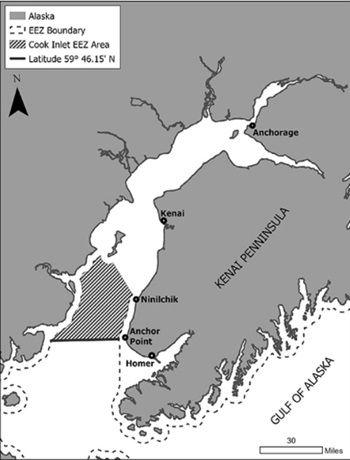 Commercial and recreational salmon fishing in the federal waters of Cook Inlet will resume this summer, but under new management by the federal government, according to a rule made final this week. Until now, the state had managed salmon fisheries in both state and federal waters of the inlet. But the switch in management was ordered by federal courts, as a result of litigation stretching back a decade. The United Cook Inlet Drift Association, or UCIDA, which is made up of commercial salmon fishers, sued the federal government in 2013 for failing to develop a salmon harvest management plan for the federal waters of the inlet. more, >>CLICK TO READ<< 13:11
Commercial and recreational salmon fishing in the federal waters of Cook Inlet will resume this summer, but under new management by the federal government, according to a rule made final this week. Until now, the state had managed salmon fisheries in both state and federal waters of the inlet. But the switch in management was ordered by federal courts, as a result of litigation stretching back a decade. The United Cook Inlet Drift Association, or UCIDA, which is made up of commercial salmon fishers, sued the federal government in 2013 for failing to develop a salmon harvest management plan for the federal waters of the inlet. more, >>CLICK TO READ<< 13:11
Canada, Alaska suspend fishing of Yukon River chinook salmon for 7 years
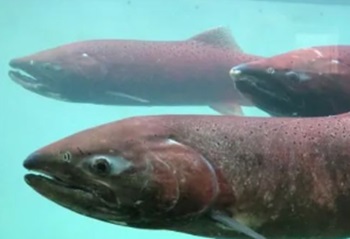 In a bid to help the recovery of the Yukon River chinook salmon run, the federal government and the State of Alaska have agreed to implement a seven-year moratorium on fishing the species. The suspension, in effect for one full life cycle of a salmon, includes commercial fishing and recreational angling in the Yukon River mainstem and its Canadian tributaries. Representatives from Fisheries and Oceans Canada and the Alaska Department of Fish and Game signed the agreement on Monday. The number of chinook salmon crossing the international border into Canadian waters has for years plummeted, with the last two years yielding some of the worst tallies recorded on the Yukon River. more, >>click to read<< 09:06
In a bid to help the recovery of the Yukon River chinook salmon run, the federal government and the State of Alaska have agreed to implement a seven-year moratorium on fishing the species. The suspension, in effect for one full life cycle of a salmon, includes commercial fishing and recreational angling in the Yukon River mainstem and its Canadian tributaries. Representatives from Fisheries and Oceans Canada and the Alaska Department of Fish and Game signed the agreement on Monday. The number of chinook salmon crossing the international border into Canadian waters has for years plummeted, with the last two years yielding some of the worst tallies recorded on the Yukon River. more, >>click to read<< 09:06
Board of Fisheries passes new Kenai king salmon plan
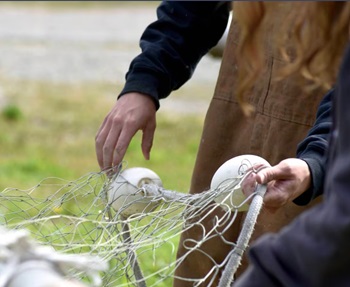 New management policies for Kenai River king salmon mean that sockeye bag limits in the river are up, and commercial setnet fishing is likely to be closed for the foreseeable future. Kenai River late run king salmon are now officially designated a stock of concern, which means a host of changes in the management plan. The Alaska Board of Fisheries finalized the designation at its meeting in Anchorage on March 1, and as part of it, revised the management plan for the fishery to help conserve more of the fish. At its October 2023 meeting, the board reviewed the Stock of Concern designation for the late run, which covers July and August in the Kenai River. At its March meeting, the board decided how to change the management plan to help rebuild the run over time. more, >>click to read<< 14:50
New management policies for Kenai River king salmon mean that sockeye bag limits in the river are up, and commercial setnet fishing is likely to be closed for the foreseeable future. Kenai River late run king salmon are now officially designated a stock of concern, which means a host of changes in the management plan. The Alaska Board of Fisheries finalized the designation at its meeting in Anchorage on March 1, and as part of it, revised the management plan for the fishery to help conserve more of the fish. At its October 2023 meeting, the board reviewed the Stock of Concern designation for the late run, which covers July and August in the Kenai River. At its March meeting, the board decided how to change the management plan to help rebuild the run over time. more, >>click to read<< 14:50
2023 was another bad year for chinook, fall chum salmon, Yukon River Panel hears
 Alaska and Yukon representatives met in Whitehorse last week to discuss the 2023 chinook and fall chum salmon runs on the Yukon River, which once again failed to meet Canadian conservation goals. An estimated 58,529 chinook salmn entered the river last year, according to public presentations by the Alaska Department of Fish and Game, and Fisheries and Oceans Canada (DFO) during the Yukon River Panel’s post-season meeting. It was the second-smallest run on record — 2022 was the smallest — and not enough to meet spawning escapement goals on either side of the border. The goals set out the minimum range of fish that need to make it to their spawning areas to healthily sustain the population. more, >>click to read<< 13:51
Alaska and Yukon representatives met in Whitehorse last week to discuss the 2023 chinook and fall chum salmon runs on the Yukon River, which once again failed to meet Canadian conservation goals. An estimated 58,529 chinook salmn entered the river last year, according to public presentations by the Alaska Department of Fish and Game, and Fisheries and Oceans Canada (DFO) during the Yukon River Panel’s post-season meeting. It was the second-smallest run on record — 2022 was the smallest — and not enough to meet spawning escapement goals on either side of the border. The goals set out the minimum range of fish that need to make it to their spawning areas to healthily sustain the population. more, >>click to read<< 13:51
State sets much larger harvest guideline for Southeast golden king crab
 The commercial tanner crab and golden king crab season in Southeast opens at noon Feb 17. A change this year will require golden king crab fishermen to call in to the Department of Fish and Game every day to report which management area they plan to fish, to help fisheries staff better anticipate and manage the harvest. The department announced the golden king crab guideline harvest level in southern Southeast, Registration Area A, at 272,500 pounds, with specific areas seeing notable changes. The number is almost three times the size of last year’s guideline harvest, with most of the increase in a single portion of the region. The increase is the result of meetings between the fishing industry and state fisheries management. more, >>click to read<< 15:00
The commercial tanner crab and golden king crab season in Southeast opens at noon Feb 17. A change this year will require golden king crab fishermen to call in to the Department of Fish and Game every day to report which management area they plan to fish, to help fisheries staff better anticipate and manage the harvest. The department announced the golden king crab guideline harvest level in southern Southeast, Registration Area A, at 272,500 pounds, with specific areas seeing notable changes. The number is almost three times the size of last year’s guideline harvest, with most of the increase in a single portion of the region. The increase is the result of meetings between the fishing industry and state fisheries management. more, >>click to read<< 15:00
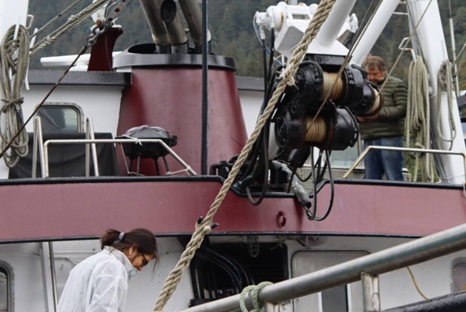
Commercial crab fishery closed for 2023-2024 season
The Alaska Department of Fish and Game has closed the commercial red and blue king crab fishery for the 2023-2024 season, the sixth year in a row, citing stock survey numbers that remain well below the regulatory threshold. The survey estimated 119,000 pounds of legal male red king crab are available for harvest, significantly below the 200,000 pounds required to open the commercial fishery, said Adam Messmer, lead king/tanner crab biologist for ADFG. While that’s an improvement from last year, where the survey estimated 95,000 pounds, improvement does not mean they are a harvestable size, Messmer said. “If they would open up the crab season for 10-15 days it would help bail us out of a terrible season,” said Norval Nelson, owner and operator of Star of the Sea, which was in Aurora Harbor. He made his comments before he learned of the news. more, >>click to read<< 18:24
As the once-lucrative Bering Sea crab harvest resumes, Alaska’s fishers face challenges
 In the short term, Alaska crab fishers and the communities that depend on them will get a slight reprieve from the disastrous conditions they have endured for the past two years, with harvests for iconic red king crab to open on Sunday. In the long term, the future for Bering Sea crab and the people who depend on it is clouded by environmental and economic upheaval. The decision by the Alaska Department of Fish and Game to open harvests of Bristol Bay red king crab after an unprecedented two-year shutdown was a close call, a state biologist told industry members during a meeting on Thursday. >>click to read<< 16:08
In the short term, Alaska crab fishers and the communities that depend on them will get a slight reprieve from the disastrous conditions they have endured for the past two years, with harvests for iconic red king crab to open on Sunday. In the long term, the future for Bering Sea crab and the people who depend on it is clouded by environmental and economic upheaval. The decision by the Alaska Department of Fish and Game to open harvests of Bristol Bay red king crab after an unprecedented two-year shutdown was a close call, a state biologist told industry members during a meeting on Thursday. >>click to read<< 16:08
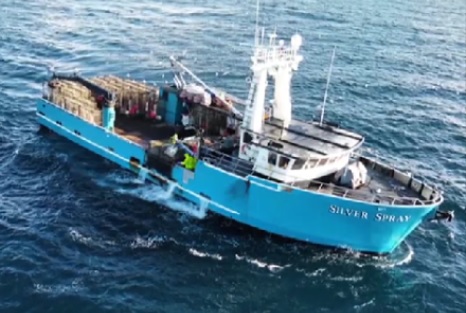
Another Bering Sea snow crab season closure brings more financial hardships for fishermen
“This is something that’s in our blood,” said Gabriel Prout, the owner and a deckhand of the 116-foot F/V Silver Spray. However, now his passion and family tradition is in jeopardy. On Oct. 6, the Alaska Department of Fish and Game announced it was closing the 2023-24 Bering Sea snow crab season for the second season in a row. “The stock is currently at all-time low levels from the survey time series,” said Ethan Nichols, the ADF&G acting area management biologist for the Bering Sea & Aleutian Islands region. “So, the threshold for opening is that total mature male biomass has to be at least 25% of long-term average. And in 2023 total mature male biomass is estimated to be between 15 and 19% of the long-term average.” The news felt like a punch to the gut for Prout, whose family relies on the season for 80 to 90% of its revenue. Video, >>click to read<< 11:40
Alaska fishermen will be allowed to harvest lucrative red king crab in the Bering Sea
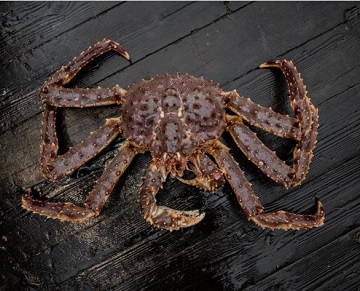 Alaska fishermen will be able to harvest red king crab for the first time in two years, offering a slight reprieve to the beleaguered fishery beset by low numbers likely exacerbated by climate change. There was no such rebound for snow crab, however, and that fishery will remain closed for a second straight year, the Alaska Department of Fish and Game announced Friday. “The Bristol Bay red king crab fishery for the prior two seasons were closed based on low abundance and particularly low abundance of mature-sized female crabs,” said Mark Stichert, the state department’s ground fish and shellfish management coordinator, “Based on survey results from this year, those numbers have improved, some signs of modest optimism in terms of improving abundance in Bristol Bay red king crab overall and that has allowed for a small but still conservative fishery for 2023 as the total population size is still quite low,” he said. >>click to read<<11:52
Alaska fishermen will be able to harvest red king crab for the first time in two years, offering a slight reprieve to the beleaguered fishery beset by low numbers likely exacerbated by climate change. There was no such rebound for snow crab, however, and that fishery will remain closed for a second straight year, the Alaska Department of Fish and Game announced Friday. “The Bristol Bay red king crab fishery for the prior two seasons were closed based on low abundance and particularly low abundance of mature-sized female crabs,” said Mark Stichert, the state department’s ground fish and shellfish management coordinator, “Based on survey results from this year, those numbers have improved, some signs of modest optimism in terms of improving abundance in Bristol Bay red king crab overall and that has allowed for a small but still conservative fishery for 2023 as the total population size is still quite low,” he said. >>click to read<<11:52






